
Want branded water bottles for your business or event? Learn how to create custom bottles from scratch with ease.
Custom water bottles are personalized containers made from steel, plastic, or glass, using printing or engraving. The design-to-delivery process takes 8–12 weeks.
Here's everything you need to create custom bottles confidently and efficiently.
What exactly are custom water bottles?
More than a bottle—they're branding tools.
Custom water bottles are designed with personalized logos, colors, or messages, made for marketing, gifts, or retail sales.
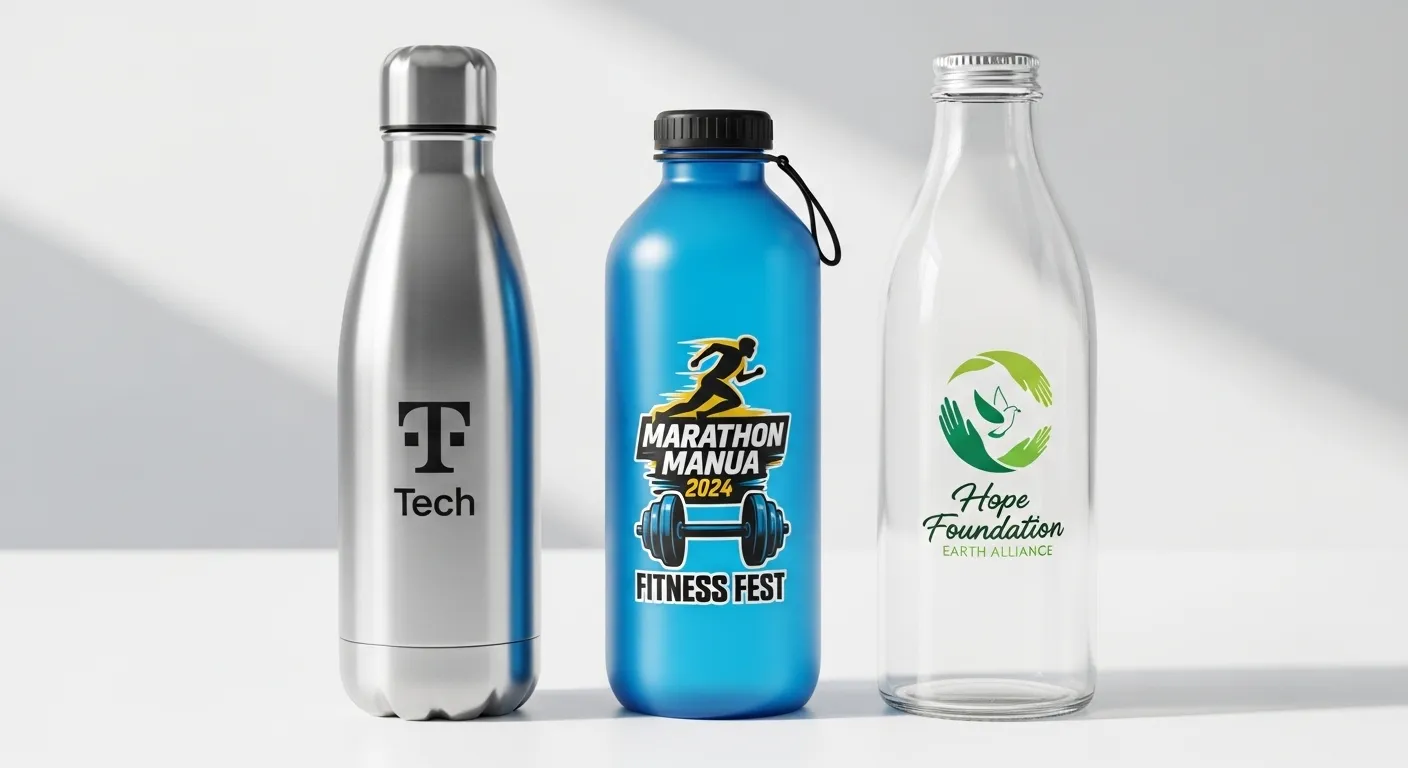
Why Custom Bottles Matter
- Promote your business or cause
- Create memorable giveaways
- Encourage sustainable habits
- Stand out in competitive markets
They're both functional and promotional.
What materials and types of water bottles can be customized?
Not all bottles are the same.
Stainless steel, plastic (PET or PP), and glass are the most common materials used for custom water bottles.
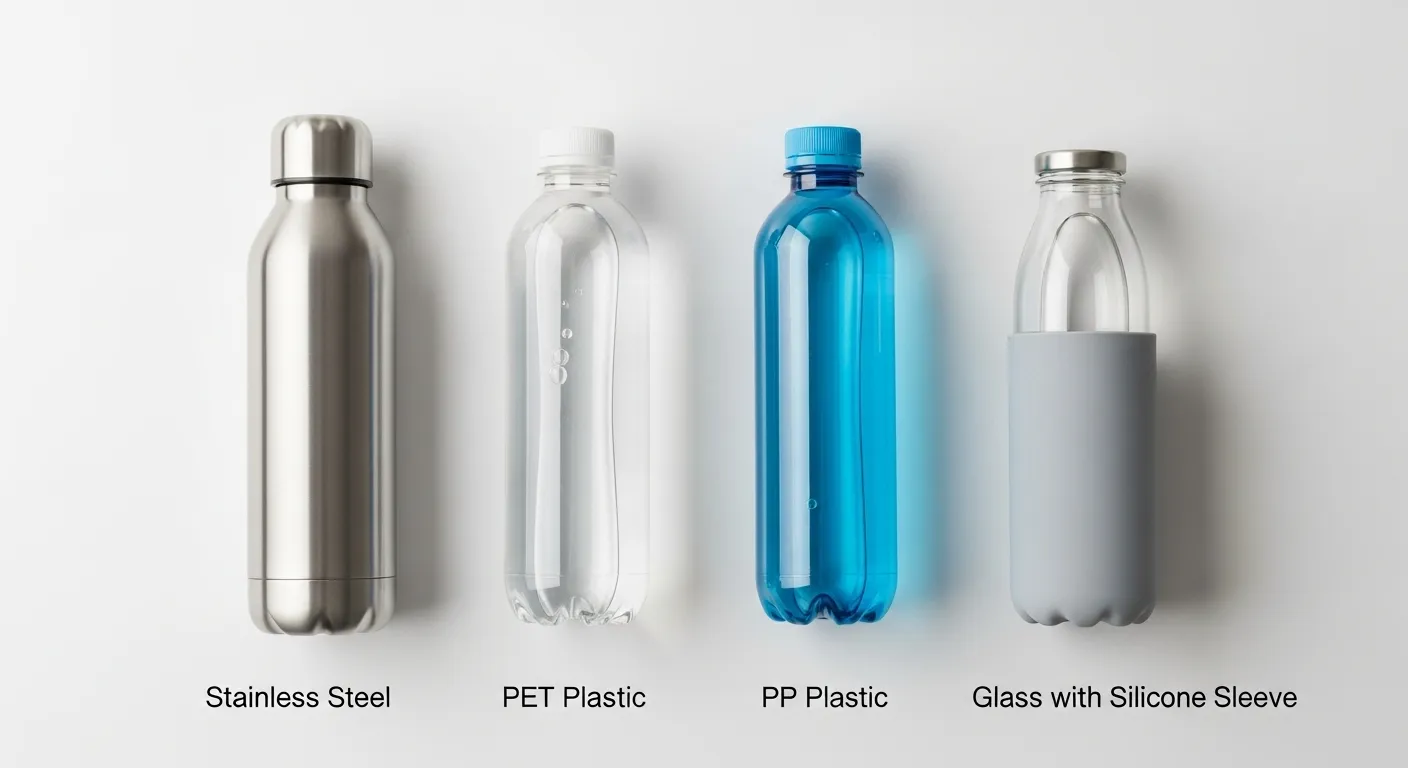
Material Comparison
| Material | Features | Best For |
|---|---|---|
| Stainless Steel | Insulated, durable, premium look | Corporate gifts, sports, retail |
| PET Plastic | Lightweight, low cost | Promotions, giveaways |
| PP Plastic | Recyclable, food-safe | Schools, events |
| Glass | Elegant, reusable, fragile | Eco brands, indoor use |
Each material has different printing and lead time options.
What are the common customization methods for water bottles?
You have options—choose what fits.
Customization techniques include screen printing, digital printing1, laser engraving2, and embossing.
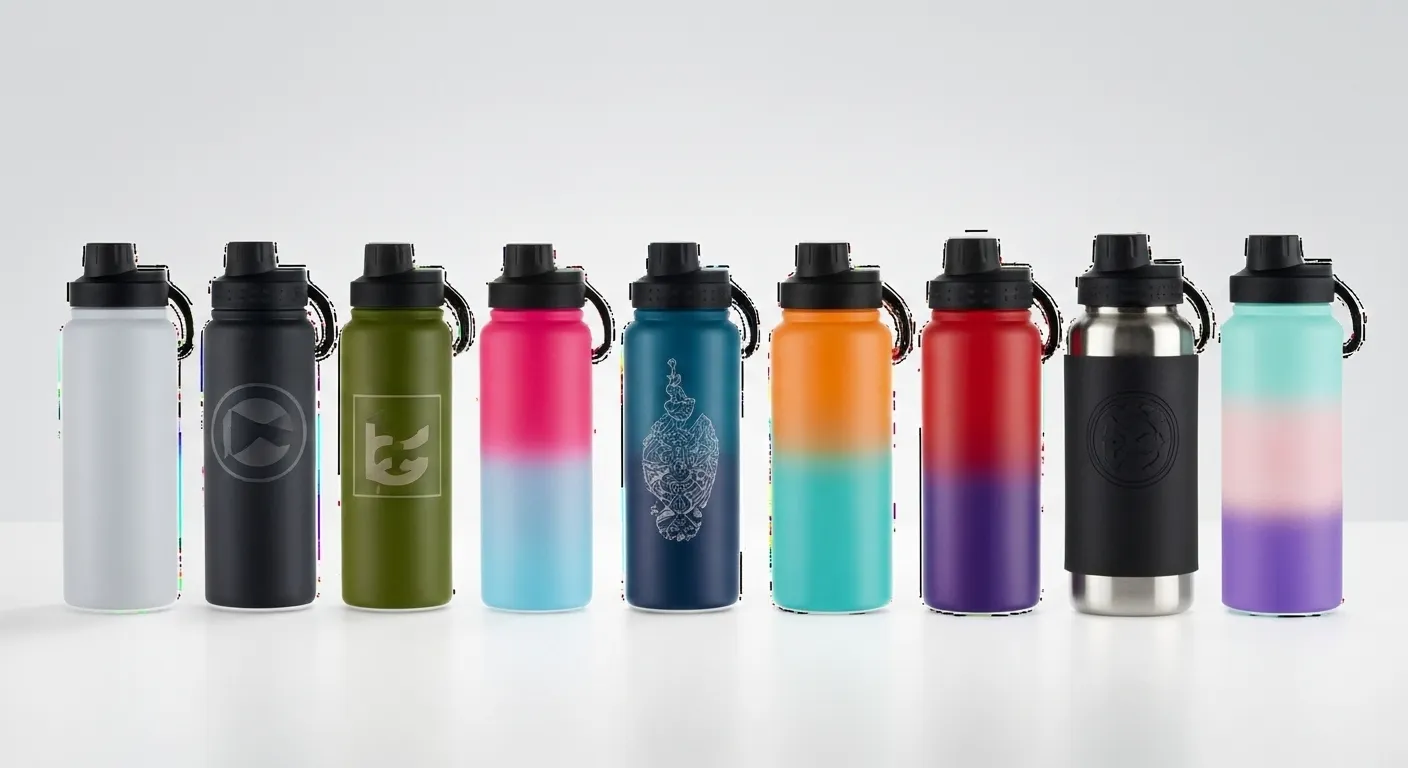
Methods Explained
- Screen Printing: Best for bold logos, solid colors.
- Digital Printing: Ideal for full-color images and gradients.
- Laser Engraving: Precise, elegant marks on metal.
- Embossing: Raised design, mostly for plastic or silicone sleeves.
Your material type will determine the best option.
How does the custom water bottle manufacturing process work?
From idea to shipping, it's a journey.
The process includes design, tooling, prototyping, approval, production, inspection, and delivery.
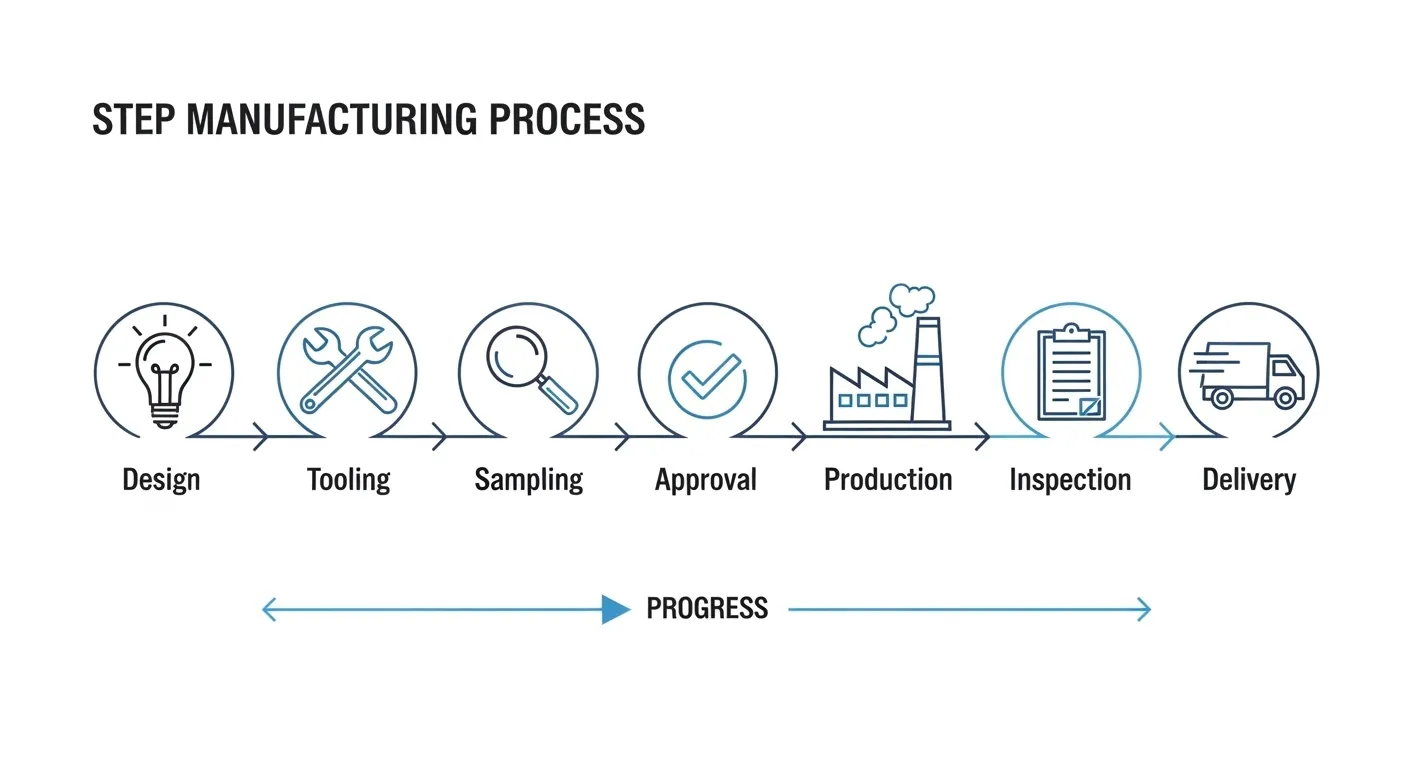
Overview of Steps
- Design & Artwork Finalization
- Tooling & Mold Fabrication (5 weeks for steel)
- Sample Creation (T1 & T2)
- Approval & Mass Production (about 45 days)
- Quality Control & Packaging
- Shipping & Delivery
Communication at each stage is key.
What steps are involved in designing and producing a custom water bottle?
Design is the foundation.
You begin with concept artwork, then proceed through tooling, sampling, approval, and finally production.
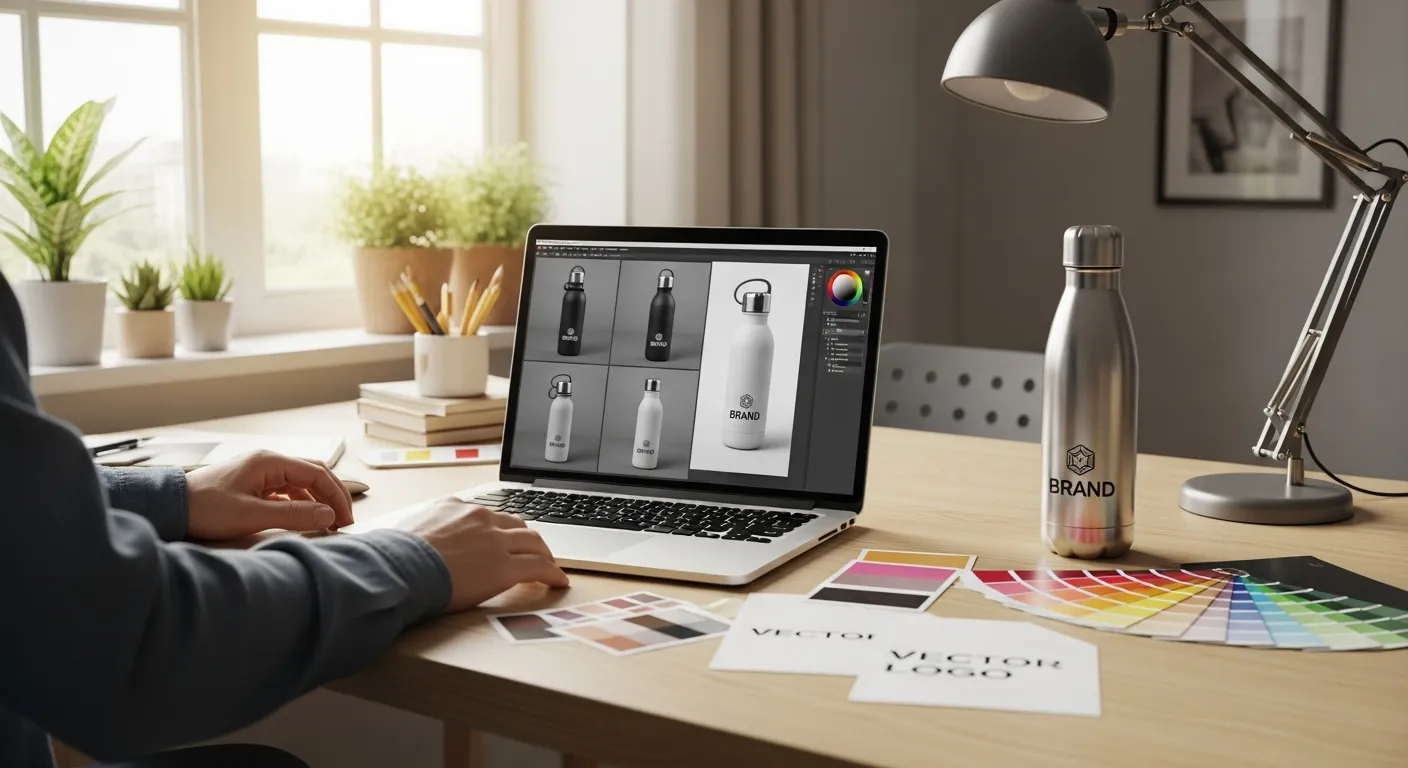
Step-by-Step Workflow
- Submit logo and bottle specifications
- Review digital mockups and 3D renders
- Approve or request changes
- Receive physical sample (T1), give feedback
- Approve final pre-production sample (T2)
- Mass production starts
- Final inspection and packing
- Arrange shipping (by sea or air)
Being responsive speeds up the process.
How long does it typically take to create a custom water bottle?
Plan ahead—it's not instant.
Total lead time for custom stainless steel bottles is usually 8–12 weeks from design to delivery.
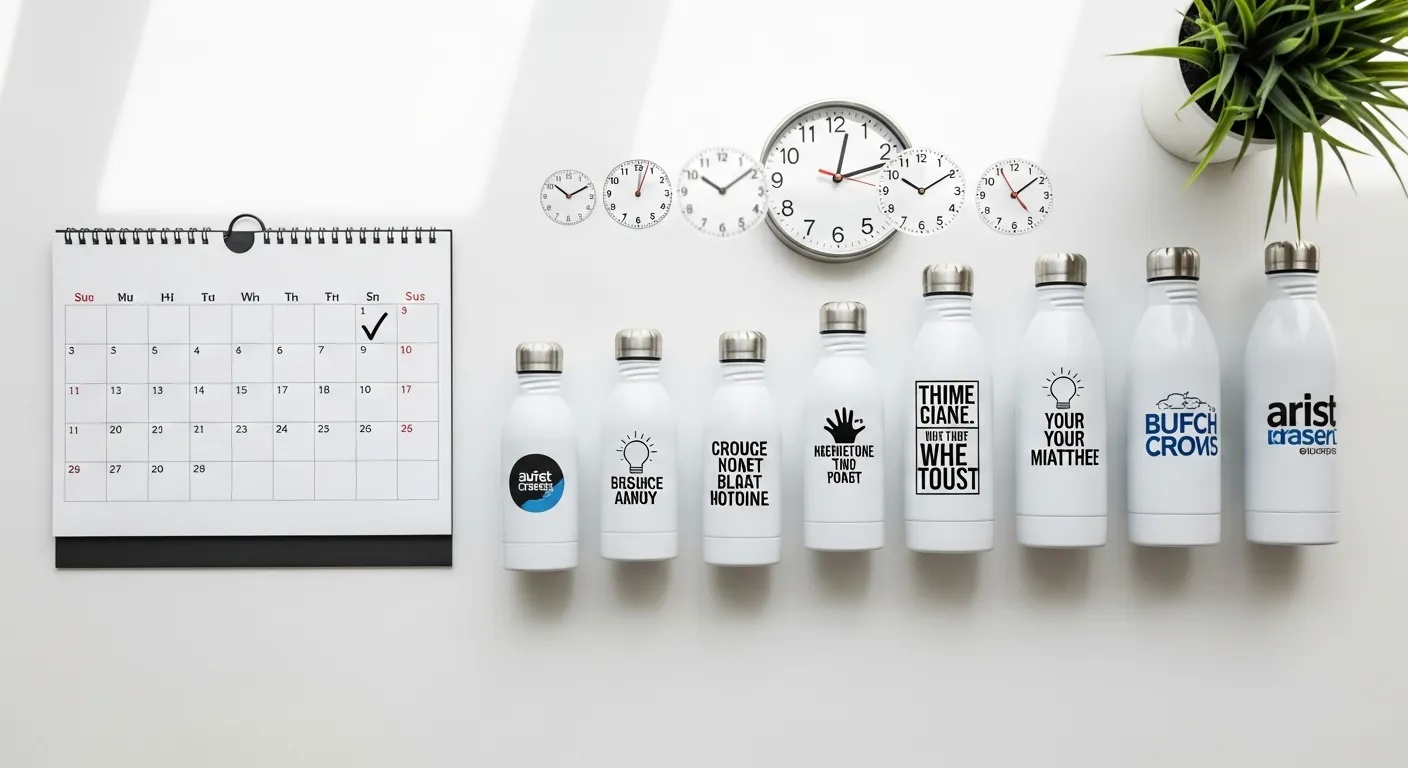
Timeline Breakdown
- Tooling: 4–5 weeks
- Sampling: 1–2 weeks
- Mass Production: 4–6 weeks
- Shipping: 1–4 weeks (depending on location)
Starting early avoids deadline stress.
What factors influence the cost of custom water bottles?
More than just size or shape.
Cost depends on materials, customization method, order size, packaging, and shipping.
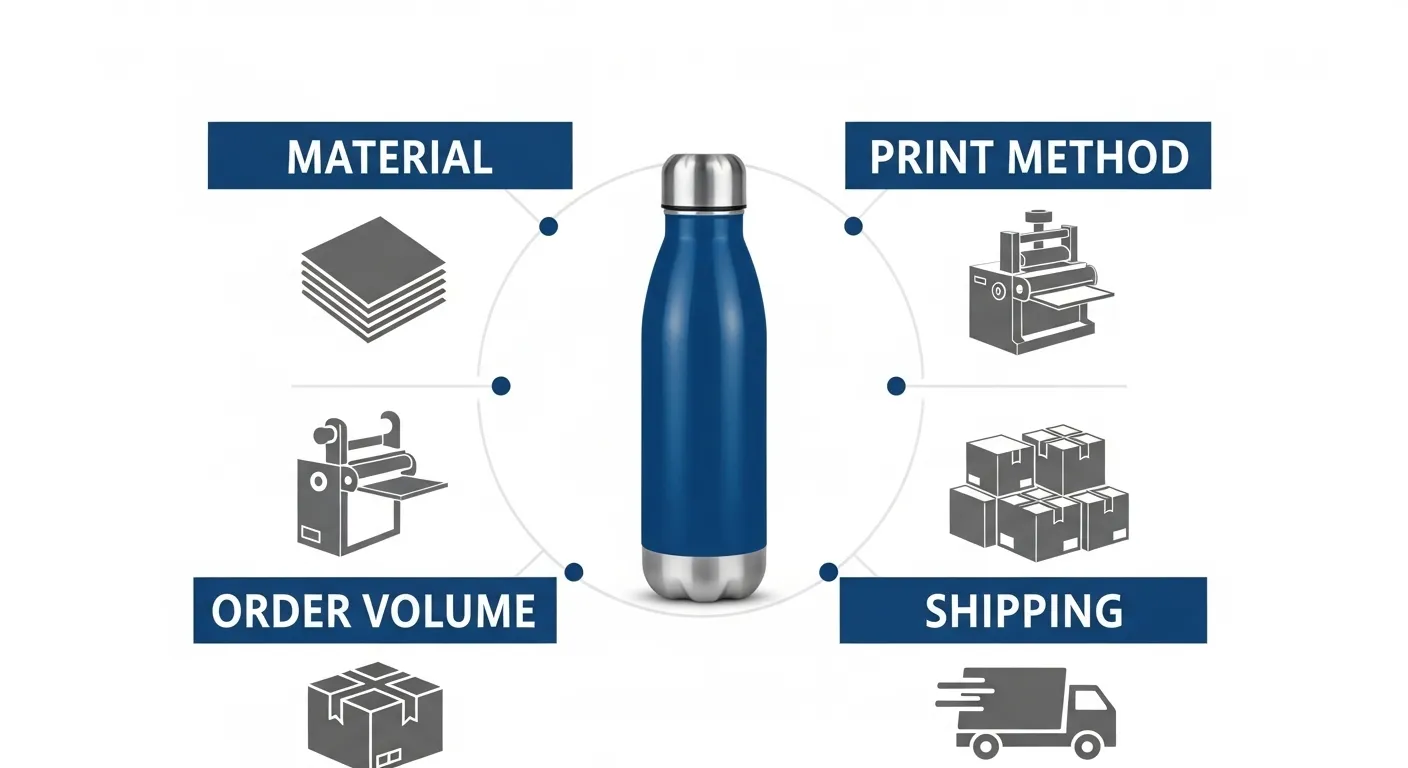
Common Cost Factors
- Material type: Steel > Glass > Plastic
- Design complexity: More colors = higher cost
- Printing method: Laser > Digital > Screen
- Order volume: Larger orders lower unit price
Bulk pricing tiers often begin at 50 units.
How can I choose the right manufacturer or supplier for my custom water bottle?
Not all suppliers are equal.
Choose manufacturers with customization expertise, strong QC, and clear communication.

What to Look For
- Portfolio of past work
- Realistic lead times and MOQs
- Support for artwork and design
- Transparent pricing and quality standards
- Verified certifications including FDA, LFGB, and ISO3
Always request samples and references.
What are the minimum order quantities and bulk pricing considerations?
More units, lower price.
MOQ (Minimum Order Quantity) typically ranges from 500 to 1000 units4, with discounts starting at 3000+ units.
How can I ensure quality and timely delivery of my custom water bottle order?
Your attention to detail matters.
Clear expectations, sample approvals, and good communication are key to success.

Quality Control Checklist
- Inspect physical samples before mass production
- Confirm color, logo, and size match specs
- Ask for leak and pressure tests
- Clarify packaging, labeling, and barcodes
- Get shipping schedules and tracking updates
A reliable supplier will guide you through each step.
Conclusion
Creating custom water bottles is a strategic process that requires planning, design, and the right partners to ensure success.
FAQs
Can I order just 50 custom bottles?
Yes, some suppliers offer low MOQs, but costs may be higher per unit.
What's the fastest turnaround time?
8 weeks is typical for stainless steel; plastic may be faster.
Is laser engraving more expensive than printing?
Yes, but it's more durable and premium-looking.
Can I use my own artwork or logo?
Absolutely—just submit it in a vector format (AI, EPS, or PDF).
What if the sample doesn't match my expectations?
You can request changes before approving mass production.
-
This comprehensive guide from Quality Imprint explains various printing methods for water bottles, including screen printing (best for bold logos and bulk orders), digital printing (ideal for full-color complex designs), pad printing (versatile for curved surfaces), and heat transfer printing, helping you choose the right customization technique for your project. ↩
-
This detailed technical article from WaterBottle.tech describes the laser engraving process for stainless steel bottles, including equipment types (fiber, UV, and CO2 lasers), how laser beams create permanent marks through surface material removal, precision capabilities, and why laser engraving produces durable, high-quality results that won't fade or peel. ↩
-
This expert resource explains LFGB certification requirements for stainless steel water bottles sold in European markets, covering safety testing for harmful substance migration, the importance of the "knife and fork" certification logo, testing procedures with third-party institutions like SGS and Intertek, and why manufacturers need this certification to export drinkware to Germany and other EU countries. ↩
-
This comprehensive NetSuite guide defines Minimum Order Quantity (MOQ) as the fewest units a manufacturer will produce or sell per transaction, explains why suppliers set MOQs to cover fixed costs and ensure profitability, describes how MOQs drive economies of scale and reduce per-unit costs, and provides insights on how businesses can calculate and negotiate MOQs based on production expenses and desired profit margins. ↩

